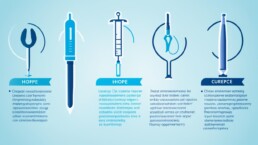Medically reviewed by Dr Chandril Chugh,
Renowned Neurologist and American Trained Specialist
Prostate cancer is a common cancer in men, and early-stage prostate cancer refers to cancer that is confined to the prostate gland and has not yet spread to other parts of the body. It is important to consider the best treatment options for early-stage prostate cancer to ensure effective management of the disease. This article will explore the various treatment choices available and provide information to help individuals make informed decisions about their health.
Table of Contents
ToggleKey Takeaways:
- Early-stage prostate cancer refers to cancer that has not spread beyond the prostate gland.
- Regular prostate-specific antigen (PSA) testing and examinations can help detect the disease at an early stage.
- There are several treatment choices available for men with early-stage prostate cancer.
- Active surveillance, surgery, radiation therapy, and focal therapies are common treatment options.
- Each treatment option has its own benefits and risks, and the choice depends on several factors.
Understanding Early-Stage Prostate Cancer
Early-stage prostate cancer refers to cancer that originates in the prostate gland and has not spread beyond its confines. This stage of cancer is often detected through prostate cancer diagnosis methods such as prostate-specific antigen (PSA) testing and medical examinations. Understanding the characteristics and behavior of early-stage prostate cancer is essential in determining the most appropriate treatment plan.
The prostate gland, located below the bladder and in front of the rectum, is a significant organ in the male reproductive system. Its primary function is to produce seminal fluid, which nourishes and transports sperm. When cancer growth occurs within the prostate gland, it can lead to prostate cancer.
Early-stage prostate cancer is characterized by its slow growth rate and the potential absence of symptoms of prostate cancer for many years. This offers an opportunity for timely detection and treatment. It is worth noting that not all cases of early-stage prostate cancer will progress and cause harm. Some cases may remain indolent and not require immediate intervention.

Regular PSA testing plays a crucial role in the identification of early-stage prostate cancer. The PSA blood test measures the level of prostate-specific antigen, a protein produced by both normal prostate cells and prostate cancer cells. An elevated PSA level may indicate the presence of prostate cancer and prompt further investigation, such as a prostate biopsy, to confirm the diagnosis.
Early-stage prostate cancer offers a range of treatment options, including active surveillance, surgery, radiation therapy, and focal therapies. The choice of treatment depends on various factors, such as the patient’s overall health, cancer risk level, and personal preferences. Understanding the characteristics of early-stage prostate cancer is the foundation for informed decision-making and personalized care plans.
Importance of Treatment Choices
When it comes to early-stage prostate cancer, there are several treatment choices available. It is crucial to carefully consider all options before making a decision. Prostate cancer treatments and medical procedures continue to improve, providing individuals with more personalized and effective treatment options.
Seeking opinions from multiple doctors can provide valuable insights and a broader perspective. Each doctor may have their own unique approach and recommendations based on their expertise and experience. Considering the preferences and goals of each individual is also essential when making treatment decisions.
Personalized treatment is key. What works for one person may not be the best choice for another. By exploring different treatment options and discussing them with healthcare professionals, individuals can make informed decisions that align with their specific needs and circumstances.
“The right treatment choice for prostate cancer comes down to a combination of medical expertise, personal preferences, and individual goals.”
Remember, prostate cancer is a complex disease, and no two cases are exactly alike. What might be the best treatment option for one person may not be the same for another. It is essential to take the time to understand the different treatment choices and their potential benefits and risks.
Next, let’s explore the specific treatment options available for early-stage prostate cancer.
Treatment Options for Early-Stage Prostate Cancer
When it comes to early-stage prostate cancer, there are several treatment options available. Each option has its own benefits and risks, and the choice of treatment depends on factors such as the cancer risk group, health conditions, age, and personal preferences. The standard therapy choices for early-stage prostate cancer include:
- Active Surveillance: This approach involves closely monitoring the cancer and delaying treatment until necessary. It is an option for men with low-risk prostate cancer, as it allows for periodic testing and monitoring to ensure that treatment is implemented if the cancer progresses. Active surveillance can help avoid overtreatment and its potential side effects.
- Surgery: One surgical treatment option for early-stage prostate cancer is radical prostatectomy, which involves the complete removal of the prostate gland. This procedure may also entail the removal of nearby lymph nodes to evaluate if the cancer has spread beyond the prostate. You should discuss with your healthcare provider which surgical approach, such as robotic or laparoscopic prostatectomy, is the most suitable for your case.
- Radiation Therapy: Radiation therapy is another treatment modality for early-stage prostate cancer. It utilizes high-energy beams to target and kill cancer cells. External beam radiation therapy delivers the radiation from a machine outside the body, while brachytherapy involves placing radioactive seeds directly into the prostate gland. Your healthcare provider can explain the differences and help you decide which radiation therapy approach is most appropriate for you.
- Focal Therapies: Focal therapies are targeted treatments that specifically focus on the area of the prostate containing the tumor. These therapies aim to destroy cancer cells while minimizing damage to surrounding healthy tissue. Examples of focal therapies include cryotherapy, which freezes and destroys cancer cells, and high-intensity focused ultrasound (HIFU), which uses sound waves to heat and destroy cancer cells.
Each treatment option carries its own risks and benefits, and it is essential to have a thorough discussion with your healthcare provider to ensure you make an informed decision based on your specific circumstances.
Here is a table summarizing the treatment options, risks, and benefits:
| Treatment Option | Risks | Benefits |
|---|---|---|
| Active Surveillance | – Risk of disease progression\n- Delayed treatment | – Avoids side effects of immediate treatment\n- Potential for avoiding unnecessary treatment |
| Surgery | – Surgical complications\n- Risk of urinary incontinence and erectile dysfunction | – Removes cancerous prostate tissue\n- Potential for cure |
| Radiation Therapy | – Side effects such as urinary and bowel problems | – Effective in targeting cancer cells\n- Non-invasive treatment option |
| Focal Therapies | – Limited long-term clinical data\n- Potential for cancer recurrence | – Minimizes damage to healthy tissue\n- Potentially fewer side effects compared to surgery or radiation therapy |
Remember, selecting the most suitable treatment option for your early-stage prostate cancer requires careful consideration of your individual circumstances, preferences, and discussions with your healthcare provider. They can help you navigate through the risks and benefits of each treatment option, ensuring you make the best decision for your health.
Active Surveillance and Watchful Waiting
When it comes to low-risk prostate cancer, two treatment approaches are commonly recommended: active surveillance and watchful waiting. Both methods involve closely monitoring the cancer without immediate intervention, allowing individuals to delay treatment while maintaining periodic monitoring.
“Active surveillance and watchful waiting offer a cautious yet proactive approach to managing low-risk prostate cancer.”
Active surveillance is often recommended for individuals with low-risk prostate cancer. This approach involves regular monitoring of PSA levels, digital rectal exams (DRE), and periodic biopsies to assess any changes or progression of the cancer. By closely tracking the cancer’s behavior, doctors can determine the appropriate time to initiate active treatment.
On the other hand, watchful waiting may be a suitable option for older adults or individuals with other serious illnesses. With watchful waiting, treatment is deferred until the cancer causes symptoms or worsens. This approach focuses on maintaining quality of life and avoiding unnecessary treatments that may have more significant impacts on overall health.
Both active surveillance and watchful waiting provide an opportunity for individuals with low-risk prostate cancer to delay treatment and closely watch the progression of the disease. By monitoring the cancer periodically, doctors can intervene if necessary, ensuring that appropriate treatments are undertaken at the right time.
Benefits of Active Surveillance and Watchful Waiting
Active surveillance and watchful waiting offer several advantages for individuals with low-risk prostate cancer:
- Reduced risk of treatment-related side effects
- Avoidance of unnecessary treatments
- Potential sparing of sexual function and urinary continence
- Preservation of quality of life
However, it is important to note that active surveillance and watchful waiting are not suitable for everyone. The choice between these treatment approaches should be made after thorough discussions with a healthcare provider, considering various factors such as overall health, age, and individual preferences.
Monitoring During Active Surveillance and Watchful Waiting
During active surveillance and watchful waiting, regular monitoring is crucial to ensure that any changes in the cancer’s behavior are promptly addressed. The monitoring process may include:
- Periodic PSA blood tests to measure prostate-specific antigen levels
- Digital rectal exams (DRE) to assess the prostate gland
- Periodic prostate biopsies to evaluate any changes in the cancer
By closely monitoring the cancer, healthcare providers can track its progression and determine the appropriate course of action when necessary.

Surgical Treatments for Prostate Cancer
Surgical treatments play a vital role in managing prostate cancer. These procedures involve the removal of the prostate gland, providing a curative approach for early-stage prostate cancer. The two primary surgical options for prostate cancer treatment are radical prostatectomy and robotic prostatectomy.
Radical prostatectomy is an established surgical procedure that involves removing the entire prostate gland and may include removing nearby lymph nodes. This comprehensive approach aims to eliminate the cancerous tissue and achieve a complete cure. While radical prostatectomy is an effective treatment option, it may result in several potential side effects, including urinary incontinence and sexual function impairment.
To mitigate these side effects, nerve-sparing surgery can be performed during the prostatectomy. Nerve-sparing surgery aims to preserve the delicate nerves responsible for sexual function, minimizing the risk of erectile dysfunction. This technique, combined with advancements in surgical precision, has significantly improved the quality of life for many patients undergoing prostatectomy.
Robotic prostatectomy, also known as robotic-assisted laparoscopic prostatectomy, is a minimally invasive alternative to open surgery. This approach utilizes robotic surgical systems to enhance the surgeon’s dexterity, precision, and visualization during the procedure. Robotic prostatectomy offers numerous benefits, including smaller incisions, reduced blood loss, faster recovery, and shorter hospital stays. This technique has revolutionized prostate cancer surgery by providing improved outcomes and increased patient satisfaction.
However, it is important to note that surgical treatments for prostate cancer may come with potential side effects. One of the most common concerns is urinary incontinence, which can occur temporarily or persistently after surgery. Fortunately, there are various management options available, including pelvic floor exercises, medication, and, in severe cases, surgical interventions such as slings or artificial urinary sphincter placement.
Furthermore, sexual function may be affected by surgery due to the proximity of the prostate gland to the nerves responsible for erectile function. While nerve-sparing techniques aim to minimize such impact, some individuals may experience changes in sexual function following surgery. There are additional treatment options available to address these concerns, including medication, penile implants, or other surgical procedures.
It is crucial for individuals considering surgical treatments for prostate cancer to have a thorough discussion with their healthcare provider. This conversation should include a detailed assessment of the potential benefits, risks, and long-term outcomes of the chosen surgical approach. Engaging in open and transparent communication with healthcare professionals will enable individuals to make informed decisions regarding their prostate cancer treatment journey.
Surgical Treatment Options
| Treatment Type | Description | Advantages | Disadvantages |
|---|---|---|---|
| Radical Prostatectomy | The complete removal of the prostate gland, often with the removal of nearby lymph nodes | – Potential cure for early-stage prostate cancer – Removes cancerous tissue | – Risk of urinary incontinence – Potential impact on sexual function |
| Robotic Prostatectomy | Minimally invasive surgery using robotic-assisted laparoscopic techniques | – Smaller incisions and reduced blood loss – Faster recovery and shorter hospital stays | – Risk of urinary incontinence – Potential impact on sexual function |

“Surgical treatments for prostate cancer, such as radical prostatectomy and robotic prostatectomy, have transformed the management of the disease. While these procedures offer potential cures, it is essential to consider the associated risks and possible side effects. Engaging in open conversations with healthcare professionals will guide you towards the most appropriate surgical option for your unique situation.”
Radiation Therapy for Early-Stage Prostate Cancer
Radiation therapy is an effective treatment option for early-stage prostate cancer. There are two main types of radiation therapy: external beam radiation therapy and brachytherapy.
External Beam Radiation Therapy

External beam radiation therapy involves using a machine to deliver high-energy beams of radiation to the prostate gland, targeting and killing cancer cells. This treatment is typically administered over several weeks, with daily sessions lasting only a few minutes.
The goal of external beam radiation therapy is to destroy the cancer cells while minimizing damage to nearby healthy tissues and organs. The procedure is painless and non-invasive, allowing patients to continue their daily activities during treatment.
It is important to note that external beam radiation therapy carries potential side effects. These may include urinary problems such as frequent urination or a weak urine stream, as well as bowel problems like diarrhea or rectal bleeding. However, these side effects are often temporary and can be managed with medications and lifestyle changes.
Brachytherapy
“Brachytherapy is a type of radiation therapy where small, radioactive seeds are implanted directly into the prostate gland to kill cancer cells.”
The seeds used in brachytherapy emit radiation within the prostate gland, delivering a high dose of radiation directly to the cancer cells. This targeted approach helps to minimize damage to surrounding healthy tissues.
Brachytherapy is typically performed as an outpatient procedure and can be done in two ways: low-dose rate (LDR) or high-dose rate (HDR). LDR brachytherapy involves permanently implanting the seeds into the prostate gland, while HDR brachytherapy uses temporary placement of the radioactive material.
As with external beam radiation therapy, brachytherapy may have side effects, including urinary and bowel problems. However, these side effects are generally less severe and resolve over time.
| Treatment | Procedure | Side Effects | Cure Rates |
|---|---|---|---|
| External Beam Radiation Therapy | Machine delivers high-energy beams to the prostate gland | Urinary and bowel problems | Similar to brachytherapy |
| Brachytherapy | Radioactive seeds implanted into the prostate gland | Mild urinary and bowel problems | Similar to external beam radiation therapy |
Both external beam radiation therapy and brachytherapy have similar cure rates, meaning they are both highly effective in treating early-stage prostate cancer. The choice between the two depends on various factors, such as the individual’s overall health, tumor characteristics, and personal preferences.
It is important to discuss the risks and benefits of radiation therapy with a healthcare provider to determine the most suitable treatment approach. They can provide personalized guidance based on the individual’s specific situation and help manage any potential side effects that may arise.
Focal Therapies for Treating Prostate Cancer
In recent years, focal therapies have emerged as a promising treatment option for early-stage prostate cancer. These innovative therapies specifically target the area of the prostate containing the tumor, allowing for precise tumor ablation while minimizing damage to surrounding healthy tissue.
Focal therapies utilize various techniques, such as cryotherapy and high-intensity focused ultrasound (HIFU), to destroy cancer cells either by freezing or heating them. These targeted treatments aim to eradicate the tumor while preserving optimal organ function and quality of life.
One advantage of focal therapies is their potential to offer fewer side effects compared to more radical approaches like surgery or radiation therapy. By precisely targeting the tumor, focal therapies can minimize complications such as urinary incontinence and erectile dysfunction that may occur with other treatment modalities.
However, it is important to note that the long-term data on the effectiveness and safety of focal therapies is still limited, and these treatments may not be suitable for all individuals. The decision to pursue focal therapies should be made on a case-by-case basis in consultation with a healthcare provider who can assess the specific characteristics of the cancer and the individual’s overall health.
To provide a comprehensive comparison of focal therapies with other treatment options for early-stage prostate cancer, here is a table summarizing the advantages and disadvantages:
| Advantages | Disadvantages |
|---|---|
| Fewer side effects compared to surgery or radiation therapy | Long-term effectiveness and safety data is limited |
| Minimizes damage to healthy tissue | May not be suitable for all individuals |
| Promotes optimal organ function and quality of life |

Considering Treatment Risks and Benefits
When facing treatment decisions for early-stage prostate cancer, it is essential to carefully weigh the risks and benefits associated with each option. Several factors should be considered before making a decision, including the potential side effects of treatment, the impact on quality of life, life expectancy, and the likelihood of recurrence and survival. By taking these factors into account, you can make an informed choice that aligns with your personal values and preferences.
Treatment Decision-Making: Before making a treatment decision, it is important to assess the potential risks and benefits of each option. This can involve discussing the side effects of different treatments, understanding the impact on daily life, and considering the potential impact on overall health and well-being.
Treatment Side Effects: Different treatments for early-stage prostate cancer can have varying side effects. For example, surgery may carry the risk of urinary incontinence and sexual function issues, while radiation therapy can cause urinary and bowel problems. Understanding these potential side effects can help you evaluate the impact of treatment on your quality of life.
Life Expectancy: When considering treatment options, it is important to understand how each choice may affect your life expectancy. This can involve discussing survival rates and long-term outcomes with your healthcare provider and considering factors such as age, overall health, and the stage of your cancer.
Quality of Life: Maintaining a good quality of life is a priority for many individuals facing prostate cancer treatment. By considering the potential impact on quality of life, such as the ability to perform daily activities, maintain relationships, and engage in hobbies, you can choose a treatment approach that aligns with your goals and values.
Recurrence and Survival: The likelihood of cancer recurrence and the potential for long-term survival should also factor into your treatment decision. Understanding your cancer risk and discussing the chances of recurrence with your healthcare provider can provide valuable insights as you weigh the potential benefits of each treatment option.
Involving loved ones and healthcare professionals in the decision-making process can offer additional support and perspective. By considering the risks and benefits of each treatment option in light of your personal circumstances and preferences, you can make a well-informed choice that addresses your unique needs.
Comparison of Treatment Options for Early-Stage Prostate Cancer
| Treatment Option | Side Effects | Impact on Quality of Life | Life Expectancy | Recurrence Rate | Survival Rate |
|---|---|---|---|---|---|
| Active Surveillance | Minimal side effects | Minimal impact | Varies based on risk | Potential risk of progression | Similar to other treatments |
| Surgery | Urinary incontinence, sexual dysfunction | Potential impact, but may improve with time | Varies based on age and overall health | Low | High |
| Radiation Therapy | Urinary and bowel problems | Potential impact, but may improve with time | Varies based on age and overall health | Low | High |
| Focal Therapies | Minimal side effects | Potential impact, but may improve with time | Varies based on age and overall health | Varies based on treatment approach | Varies based on treatment approach |
Note: The table above provides a general comparison of treatment options for early-stage prostate cancer. It is important to consult with your healthcare provider to understand your individual risks and potential outcomes based on your specific case.

Getting Help with Treatment Decisions
Choosing the best treatment for early-stage prostate cancer can be a daunting task. However, you don’t have to navigate this decision alone. By seeking support from various sources and actively involving yourself in the process, you can make a well-informed choice that aligns with your individual needs and preferences.
First and foremost, consider reaching out to your family and friends for their support. They can provide you with valuable insights, emotional assistance, and a supportive shoulder to lean on during this challenging time.
In addition to your loved ones, there are also dedicated support programs and organizations that can offer guidance and resources. These programs are designed to provide information, education, and emotional support to individuals and families affected by prostate cancer. Connecting with these support programs can offer a sense of community and help you access the information you need to make informed decisions.
When making treatment decisions, it is crucial to obtain multiple medical opinions. Seeking input from different specialists can help you evaluate your treatment options comprehensively. Each doctor brings their unique expertise and perspective, allowing you to consider different approaches and potential outcomes.
Furthermore, consider the treatment experience and expertise available at different treatment centers. Research the reputation and success rates of various institutions, and evaluate the resources and specialized services they offer. Choosing a treatment center with a strong track record and a comprehensive range of services can enhance your treatment experience and potentially improve outcomes.

Remember, the decision-making process should be a collaborative effort between you and your healthcare providers. Shared decision-making allows for open and transparent communication, ensuring that the treatment choices align with your values and preferences. Discuss your concerns, ask questions, and actively participate in the decision-making process to shape your treatment plan.
By seeking assistance, obtaining multiple medical opinions, considering treatment center options, and engaging in shared decision-making, you can navigate the complexities of treatment decisions for early-stage prostate cancer with confidence.
Conclusion
When it comes to optimal prostate cancer treatments in the early stages, making an informed decision is crucial. With a wide range of treatment options available, it is essential to consider personalized factors, risks, and benefits. Understanding the characteristics of early-stage prostate cancer and weighing treatment choices are important steps in the decision-making process.
Considering multiple medical opinions and involving loved ones can provide valuable insights and support. Shared decision-making, in collaboration with healthcare providers, ensures that treatment choices align with your values and preferences. Remember, each person’s experience with prostate cancer is unique, so treatment decisions should be based on individual circumstances and preferences.
By taking a thoughtful and informed approach, you can navigate the range of treatment options available and find the best approach for your specific situation. Supported by healthcare providers and loved ones, you can confidently make decisions that optimize your prostate cancer treatment and overall well-being.
FAQ
What is early-stage prostate cancer?
Early-stage prostate cancer refers to cancer that has not spread beyond the prostate gland. It is confined to the prostate and has not yet spread to other parts of the body.
How is early-stage prostate cancer diagnosed?
Early-stage prostate cancer is often diagnosed through regular prostate-specific antigen (PSA) testing and physical examinations, including digital rectal exams (DRE). These tests help detect the disease at an early stage.
What treatment options are available for early-stage prostate cancer?
The standard treatment options for early-stage prostate cancer include active surveillance, surgery, radiation therapy, and focal therapies. Each option has its own benefits and risks, and the choice depends on various factors such as cancer risk group, health conditions, age, and personal preferences.
What is active surveillance?
Active surveillance is a treatment approach for low-risk prostate cancer that involves closely monitoring the cancer without immediate intervention. It includes regular monitoring of PSA levels, digital rectal exams (DRE), and periodic biopsies to assess cancer progression.
What are the surgical treatments for prostate cancer?
Surgical treatments for prostate cancer involve the removal of the prostate gland. The standard surgical procedure is radical prostatectomy, which removes the entire prostate gland. There are also minimally invasive alternatives, such as robotic or laparoscopic prostatectomy, which offer shorter recovery time.
What is radiation therapy?
Radiation therapy is a treatment option for early-stage prostate cancer. It uses high-energy beams to target and kill cancer cells. There are two types: external beam radiation therapy, which uses a machine to deliver the radiation, and brachytherapy, which involves placing radioactive seeds into the prostate gland.
What are focal therapies?
Focal therapies are emerging as a treatment option for early-stage prostate cancer. They aim to target only the area of the prostate containing the tumor, minimizing damage to healthy tissue. Examples of focal therapies include cryotherapy and high-intensity focused ultrasound (HIFU).
How do I make treatment decisions for early-stage prostate cancer?
When making treatment decisions, it is important to consider the risks and benefits of each option. Factors to assess include potential treatment side effects, impact on quality of life, life expectancy, and the likelihood of recurrence and survival. It is also crucial to understand personal values and involve loved ones in the decision-making process.
Where can I get help with treatment decisions?
Support from family, friends, and support programs can provide valuable insights and emotional assistance in making treatment decisions. It is also recommended to obtain multiple medical opinions, including those from different specialists, and consider the treatment experience, resources, and expertise available at different treatment centers.
How do I ensure my treatment aligns with my values and preferences?
Shared decision-making, a collaborative approach between healthcare providers and patients, ensures that treatment choices align with the individual’s values and preferences. Open communication and discussions about treatment options, risks, and benefits are essential in making informed decisions.
Source Links

This article is medically reviewed by Dr. Chandril Chugh, Board-Certified Neurologist, providing expert insights and reliable health information.
Dr. Chandril Chugh is a U.S.-trained neurologist with over a decade of experience. Known for his compassionate care, he specializes in treating neurological conditions such as migraines, epilepsy, and Parkinson’s disease. Dr. Chugh is highly regarded for his patient-centered approach and dedication to providing personalized care.








